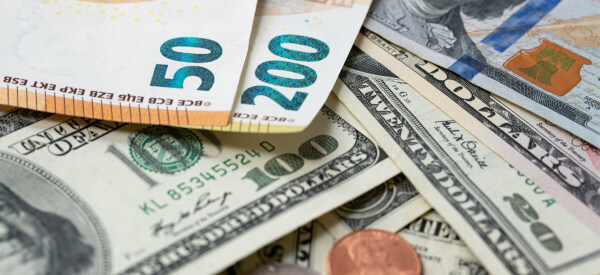Revolut France fees abroad: everything you need to know about cards, payments and withdrawals
What are Revolut's fees abroad? What do we know about its different payment cards and exchange rates? Let's investigate!

When paying or withdrawing money abroad with your French bank card, each transaction usually involves a currency conversion — and, as a result, foreign exchange fees. To reduce these costs, many travellers look for bank cards with no exchange fees. But do they really exist? What should you watch out for, and which cards offer the best value? Let’s take a closer look.
If you need an easy-to-use and cost-effective card for your next trip abroad from France, you could consider the Wise card. It allows you to spend and withdraw money in multiple currencies, converting at the mid-market exchange rate, while most banks use marked-up rates.
In recent years, many banks and fintechs have launched cards marketed as “no foreign exchange fee” options, mainly targeting frequent travellers. But before applying, it’s important to understand how these cards really work.
The exchange rate represents how much one currency is worth in another.
For example, because the euro and the US dollar don’t have the same value, the rate tells you how much one euro is worth in dollars — or vice versa — at a specific moment.
There are different types of exchange rates, and not all are equally favourable for consumers.
Most traditional banks use a marked-up rate when converting currencies — meaning they add a margin to the real market rate.
That margin is how banks make money from conversions.
Example: if 100 USD equals €90 at the market rate, a bank might convert it to only €85 and keep the €5 difference as profit.
When a bank claims to offer a “no foreign exchange fee” card, it’s worth asking: how does it make money, then?
Often, these cards include hidden fees — either fixed or percentage-based — on foreign transactions. In addition, the exchange rate they use may already include a margin, even if the fee isn’t shown on your statement.
These costs can quickly add up, especially if you travel frequently or make regular international payments.
The mid-market exchange rate — sometimes called the interbank rate — is the rate you see on Google or Reuters. It’s the midpoint between the buying and selling prices of two currencies.
Some financial institutions, such as Wise, use this rate for all currency conversions, helping you avoid hidden mark-ups and unnecessary costs.
Here’s a comparison of common bank cards and their fees for currency conversions, withdrawals, and payments:
| Card | Exchange rate | Withdrawal | Payment |
|---|---|---|---|
| Revolut (Standard card)¹ | Revolut rate (with markup on weekends)² | €200 or 5 withdrawals per month | Free on weekdays (up to €1,000) |
| Fortuneo (CB MASTERCARD)³ | Not specified | 1.94% | 1.94% |
NB: These are the standard card fees. Premium versions may offer reduced rates or other benefits for a monthly or annual subscription.
As you can see, cards with absolutely no fees don’t really exist. The best approach is to choose one that offers transparent pricing and competitive conversion rates — especially if you often travel outside the eurozone.
The Wise card could be a good option for frequent travellers. It uses the mid-market exchange rate, even on weekends, without hidden mark-ups.
More information on the Wise card
The best travel card depends on your needs and spending habits.
If you plan to pay or withdraw money in foreign currencies, look for one that keeps foreign exchange fees to a minimum.
The Wise card uses the mid-market exchange rate for all conversions, helping you save on hidden fees when travelling from France.
Both Visa and Mastercard work almost everywhere in the world today. The difference is mainly in the fees and services offered by your bank, not the card network itself.
Still, it’s always wise to confirm that your card works in the country you’re visiting.
Yes — with most debit cards, you can withdraw money from ATMs overseas. The withdrawal is converted from one currency to another at the time of the transaction, usually at the rate chosen by your bank.
To save money, use a card that applies fair exchange rates and minimal withdrawal fees.
The Wise card could be a practical choice for managing your money abroad. It allows you to:
Additional advantages:
Sources:
Last checked on September 16, 2025.
This article is a translation of the original article published in French and was translated within 365 days of publication. While the content has been translated for accessibility, the data and sources referenced have not been updated since the original publication date.
*Please see terms of use and product availability for your region or visit Wise fees and pricing for the most up to date pricing and fee information.
This publication is provided for general information purposes and does not constitute legal, tax or other professional advice from Wise Payments Limited or its subsidiaries and its affiliates, and it is not intended as a substitute for obtaining advice from a financial advisor or any other professional.
We make no representations, warranties or guarantees, whether expressed or implied, that the content in the publication is accurate, complete or up to date.

What are Revolut's fees abroad? What do we know about its different payment cards and exchange rates? Let's investigate!

Where can I exchange euros for dollars, in France and abroad? What precautions should I take and what are the best solutions to consider? Focus!

Best practices for getting the best exchange rate in France on withdrawals, payments, and transfers in foreign currency.

Guide to getting virtual bank cards: how to do it? Is it possible to get one for free? What are the alternatives?

Is it possible to have a Revolut account in Switzerland? What features are offered? What are the fees for foreign currency transactions?

How do I get a refund or compensation if my EasyJet flight was canceled? Have the rules changed due to the COVID-19 outbreak?